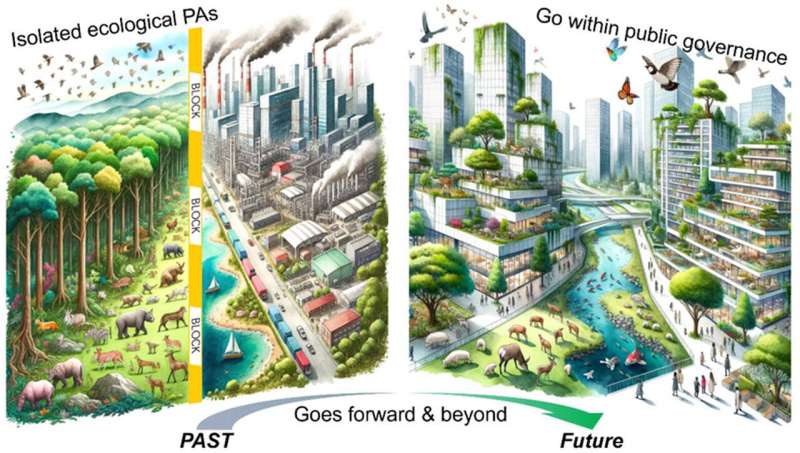This article has been reviewed according to Science X's editorial process and policies. Editors have highlighted the following attributes while ensuring the content's credibility:
fact-checked
trusted source
proofread
Assessment of China's protected areas needs refining, study finds

The urgency of conserving biodiversity and natural habitats is critical worldwide. Balancing human needs with a growing recognition of the need to conserve and protect diversity is challenging. Despite positive progress, China's protected areas (PAs) management system still has unresolved issues.
In a study published in Journal of Cleaner Production, researchers from the Xishuangbanna Tropical Botanical Garden (XTBG) of the Chinese Academy of Sciences and their collaborators examined the current status and challenges of China's PA system and proposed a paradigm shift toward comprehensive public governance.
The researchers investigated how China's PAs management aligns with global goals, exploring the integration of ecological conservation with sustainable production and livelihoods, thus responding to the global call for sustainable practices.
By emphasizing the shift from pure ecological protection to inclusive public governance in China's PAs, they advocated a synergistic approach that weaves together ecological health, human well-being, and economic prosperity.
They believed that the nationwide promotion of the Ecological Conservation Redline (ECR) can effectively integrate the needs of ecological space (including PAs and other lands for ecological value realization) and other land uses (productive and residential) into a unified division.
In addition, different policies can be implemented in different regions, from cities to PAs, to ensure efficient and appropriate measures to promote sustainability.
According to the researchers, China needs to reform its PA system to achieve biodiversity conservation and sustainable development goals. This requires addressing challenges in defining PA boundaries, allocating management authority, and securing sustainable funding. A shift to an inclusive public governance paradigm can better balance human rights for development and environmental sustainability.
"By constructing a multi-stakeholder participation mechanism, we can more effectively and fairly enable the sustainable use of ecological resources and the value realization of ecological products, which will help to balance ecological protection and economic development in China and beyond," said Bai Yang of XTBG.
More information: Yang Bai et al, How to go forward and beyond: Future tasks of China's protected areas system, Journal of Cleaner Production (2024). DOI: 10.1016/j.jclepro.2024.141132
Provided by Chinese Academy of Sciences




















